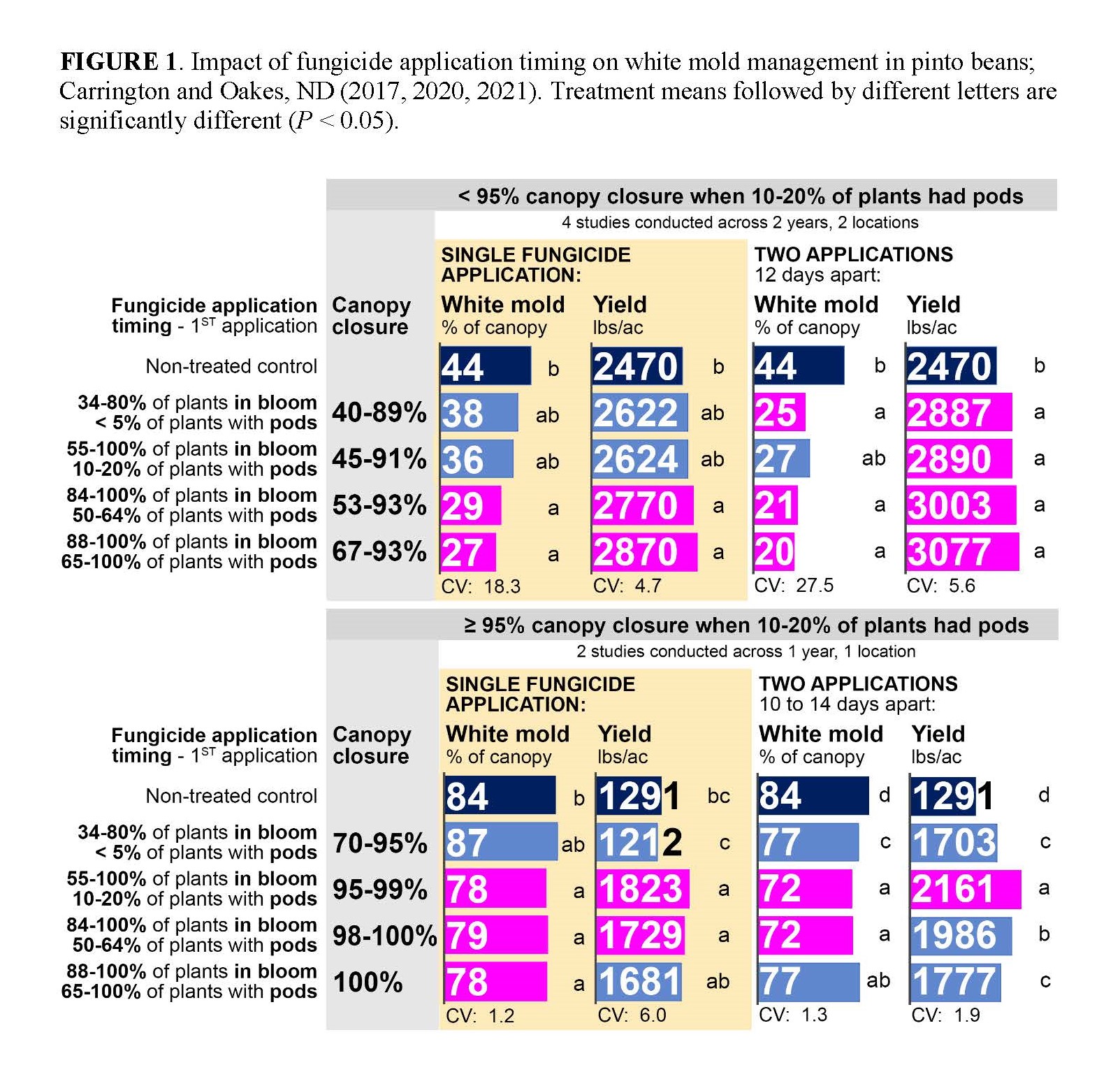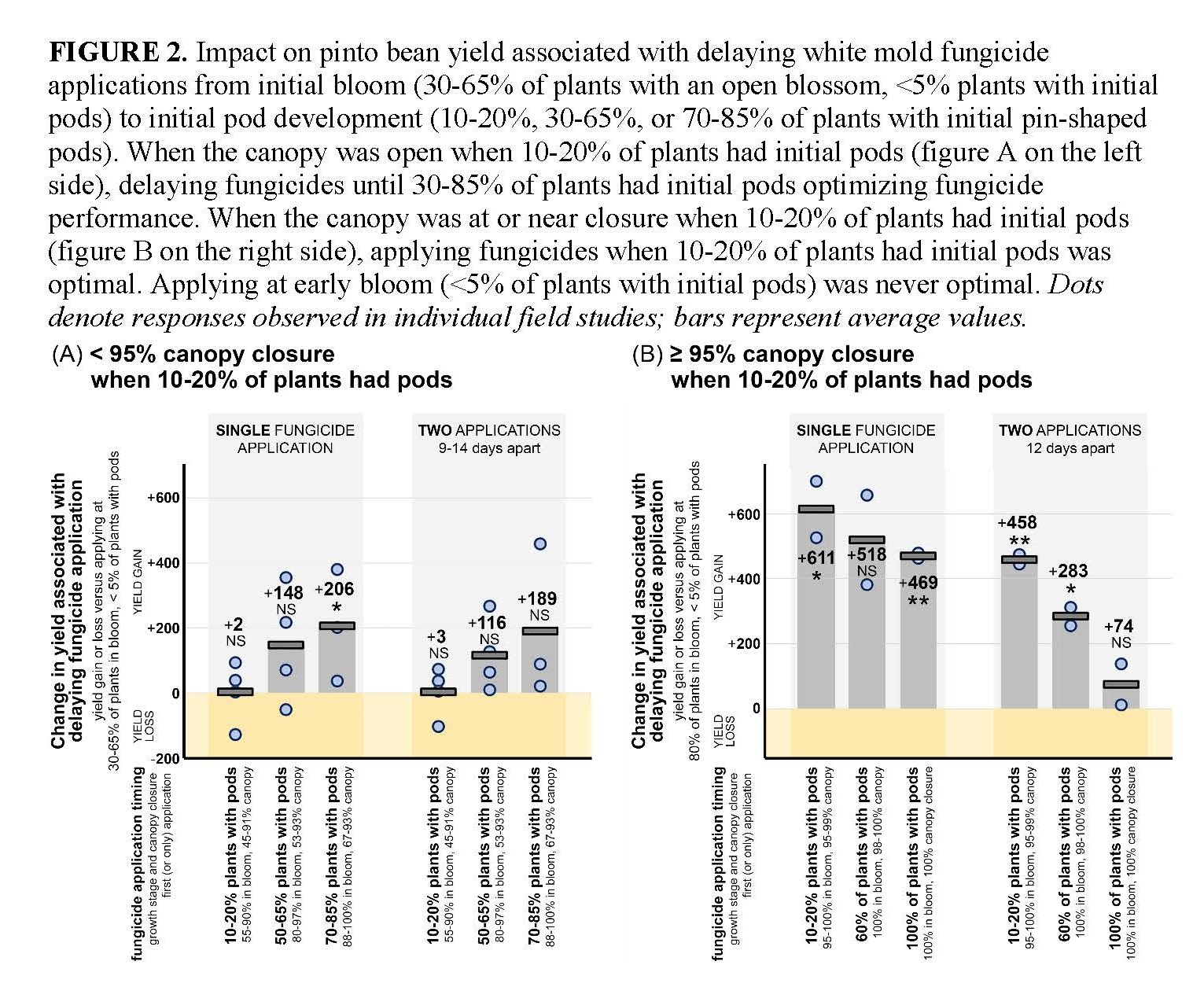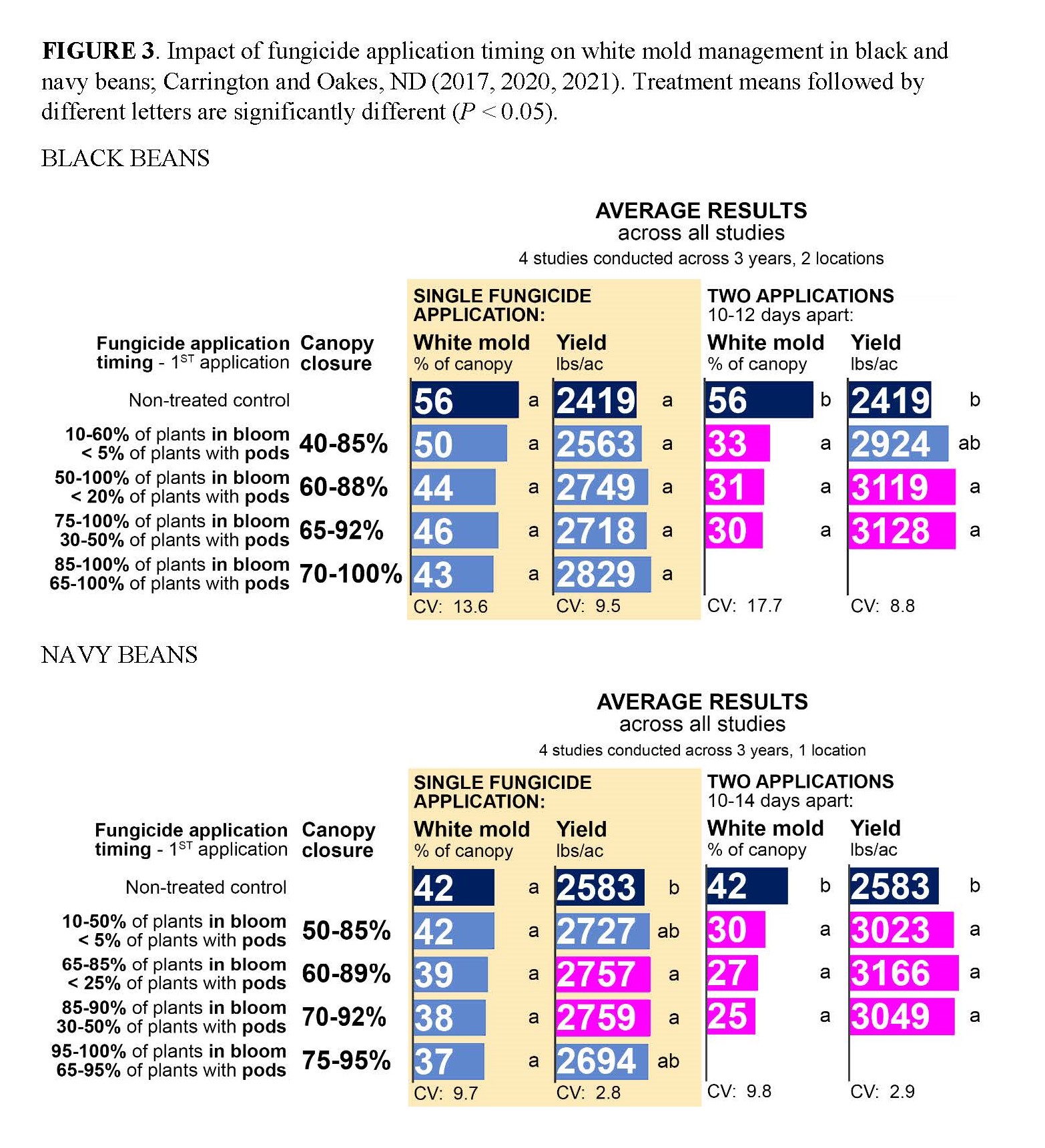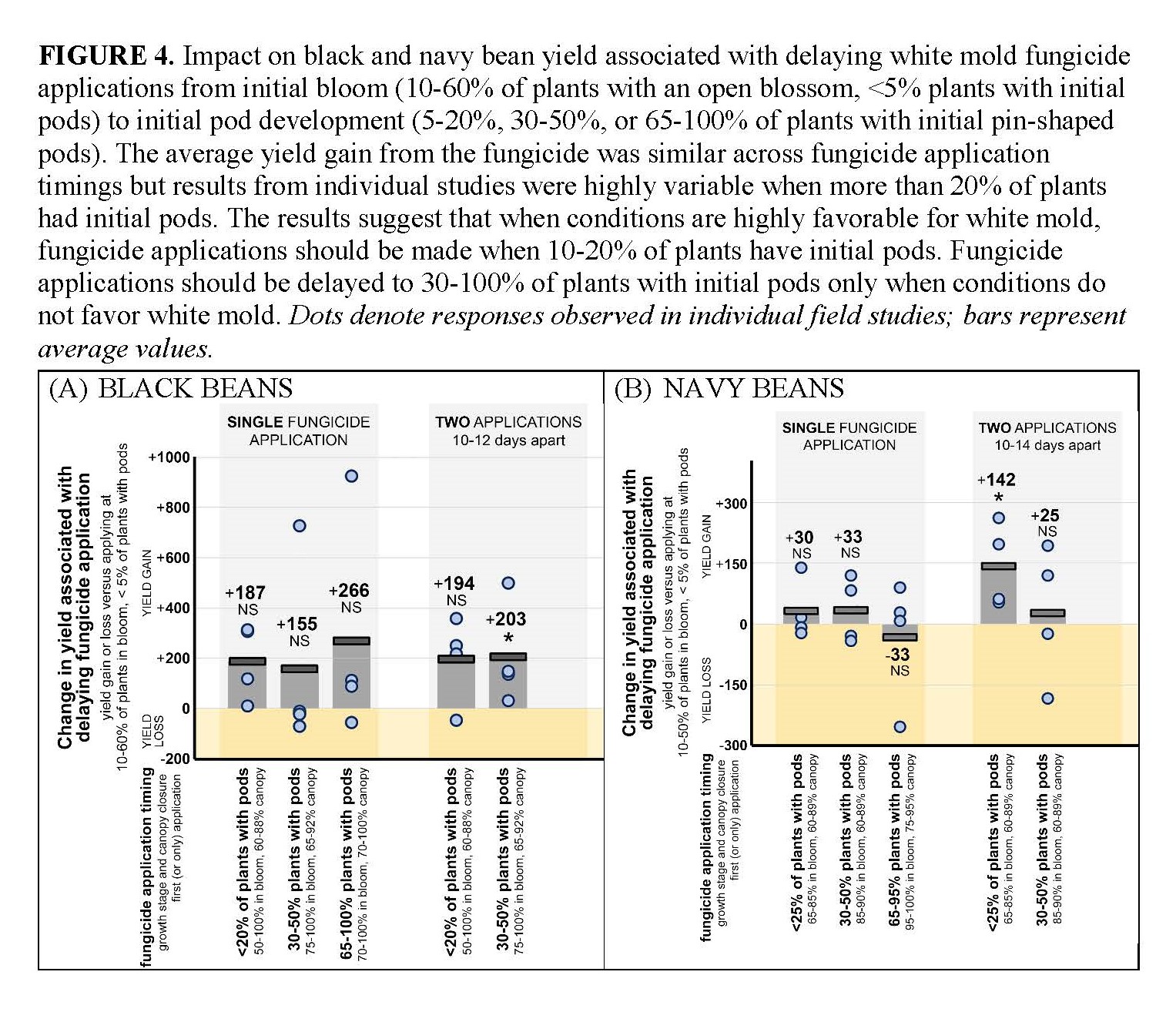Optimizing Fungicide Application Timing for Improved Management of White Mold in Dry Beans
Across the dry bean producing regions of North Dakota and Minnesota, the growth stage at which fungicides are applied to dry beans targeting white mold differs widely across producers and across production regions. When conditions favor white mold as dry beans enter bloom, fungicides are applied as early as initial bloom (10 to 20% of plants with an open blossom) to as late as initial pod (50 to 75% of plants with initial pin-shaped pods). Research evaluating fungicide application timing for white mold in dry beans has been lacking, and the application timing utilized has been largely driven by tradition.
To generate data for rigorous research-based recommendations for optimizing fungicide application timing targeting white mold in dry beans, field studies were conducted at the NDSU Carrington Research Extension Center and at the NDSU Robert Titus Irrigation Research Farm in Oakes in 2017, 2020 and 2021. Parallel studies were conducted in pinto, dark-red kidney, navy and black beans. Overhead irrigation was applied as needed to facilitate disease pressure. The goal of this project was to identify when fungicides should be applied when risk of white mold is elevated as dry beans enter bloom.
Testing was conducted on dry beans seeded to 14-inch or 28-inch rows at 90,000 viable seeds/ac (pinto and kidney beans) or 100,000 viable seeds/ac (navy and black beans). Testing was conducted on ‘Laz Paz’ (2017), ‘Lariat’ (Carrington, 2020), and ‘Palomino’ pinto beans (Oakes, 2020 and 2021; Carrington, 2021); ‘Avalanche’ (Carrington, 2017), ‘T9905’ (Carrington, 2020) or ‘HMS Medalist’ navy beans (Carrington, 2020); ‘Eclipse’ (Oakes and Carrington, 2017) and ‘Black Bear’ (Carrington, 2020) black beans; and ‘Dynasty’ dark-red kidney beans. Fungicides were applied with a hand-held 56-inch, 4-nozzle boom. When canopy closure averaged less than 90%, applications were made with TeeJet DG11015 nozzles at 30 psi (medium droplets); when canopy closure averaged 90-95%, applications were made with TeeJet AIXR11015 nozzles at 60 psi (medium-coarse droplets); and when canopy closure was >95%, applications were made with TeeJet AIXR11015 nozzles at 50 psi (coarse droplets). Testing was conducted with a single application of Topsin (30 fl oz/ac in 2017 and 2020; 40 fl oz/ac in 2021) and with sequential applications of Topsin followed by Endura (8 oz/ac) 8 to 14 days later. Studies were conducted with 6 to 14 replicates, with a large number of replicates utilized so as to mitigate spatial differences in Sclerotinia disease pressure.
The best predictors of optimum fungicide application timing were percent canopy closure and the percent of plants with one or more initial pods.
- Pinto beans: When the canopy was at or near closure (average ≥ 95% of the ground covered) when the first pin-shaped pods were developing, white mold management and pinto bean yield were optimized when fungicides were applied when approx. 15% of plants had initial pin-shaped pods (Figure 1). When the canopy was open (average < 95% of the ground covered) when the first pin-shaped pods were developing, white mold management and dry bean yield were optimized when fungicide applications were delayed until 50% of the plants had initial pin-shaped pods (Figure 2). The growth stage which optimized fungicide performance was the same irrespective of whether one fungicide application or two sequential applications were made.
- Black beans and navy beans: When the canopy was open (average < 95% closure) when the first pin-shaped pods were developing, the response to fungicides was very similar irrespective of whether applications were made at the first appearance of pin-shaped pods or delayed until 30-50% of plants had initial pods (Figures 3 and 4). However, yield gains in individual studies were highly variable when fungicide applications were made after 20% of plants had initial pods, indicating that making applications when more than 20% of plants had initial pods is only optimal when conditions do not favor infection by the Sclerotinia pathogen.
- Kidney beans: Only two of the field trials conducted on kidney beans had sufficient white mold disease pressure to evaluate the impact of fungicide application timing. Preliminary results suggest that the optimal application timing may be similar to navy and black beans (10 to 20% of plants with initial pin-shaped pods irrespective of canopy closure), but additional data are needed before recommendations can be developed.




Follow-up research is in progress this season to confirm these findings. The number of field studies conducted for each market class was relatively small, and statistical separation was often not achieved. Final conclusions are anticipated after a fourth year of field trials in 2022.
Michael Wunsch, Ph. D.
Michael.Wunsch@ndsu.edu
Plant Pathologist
with Jesse Hafner, Suanne Kallis, and Thomas Miorini

